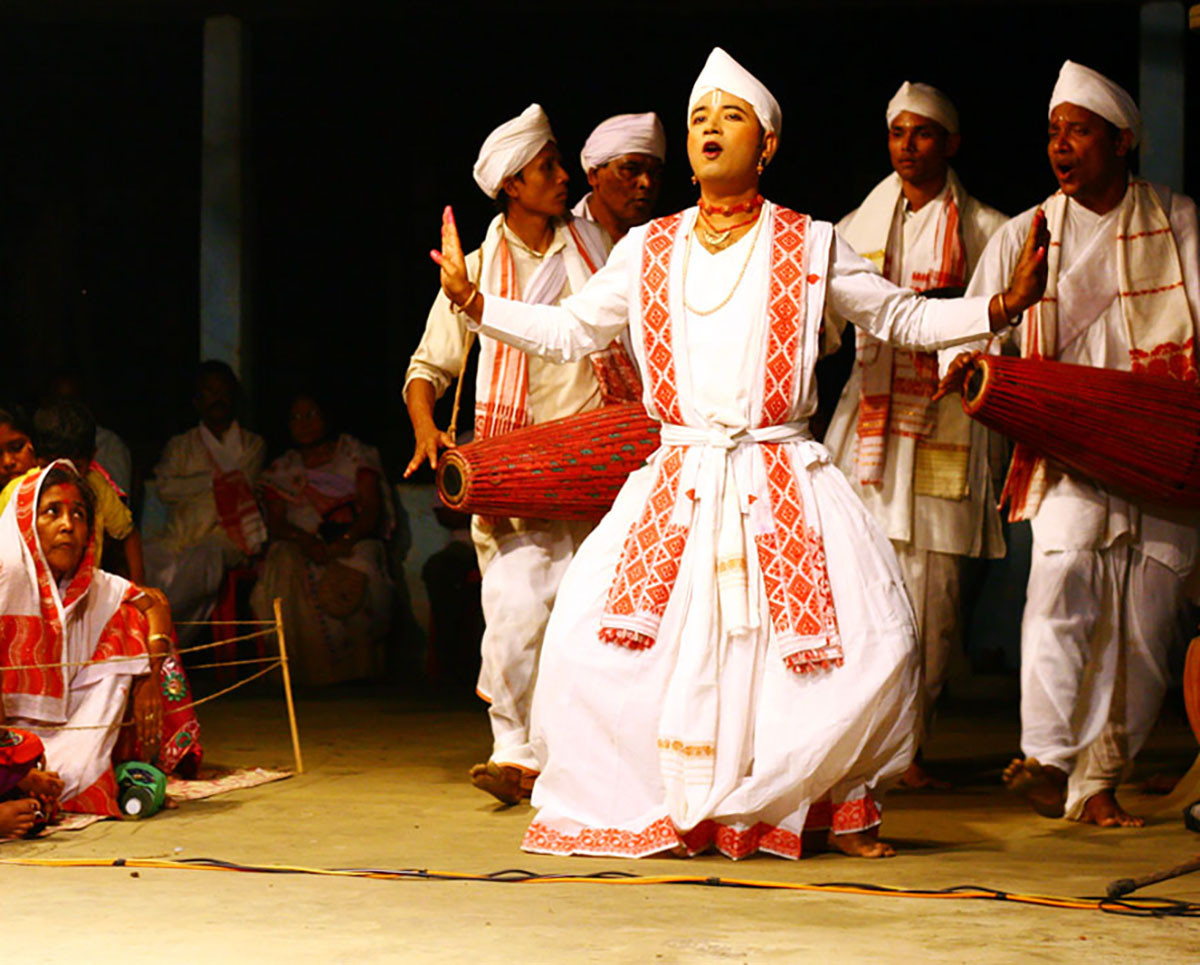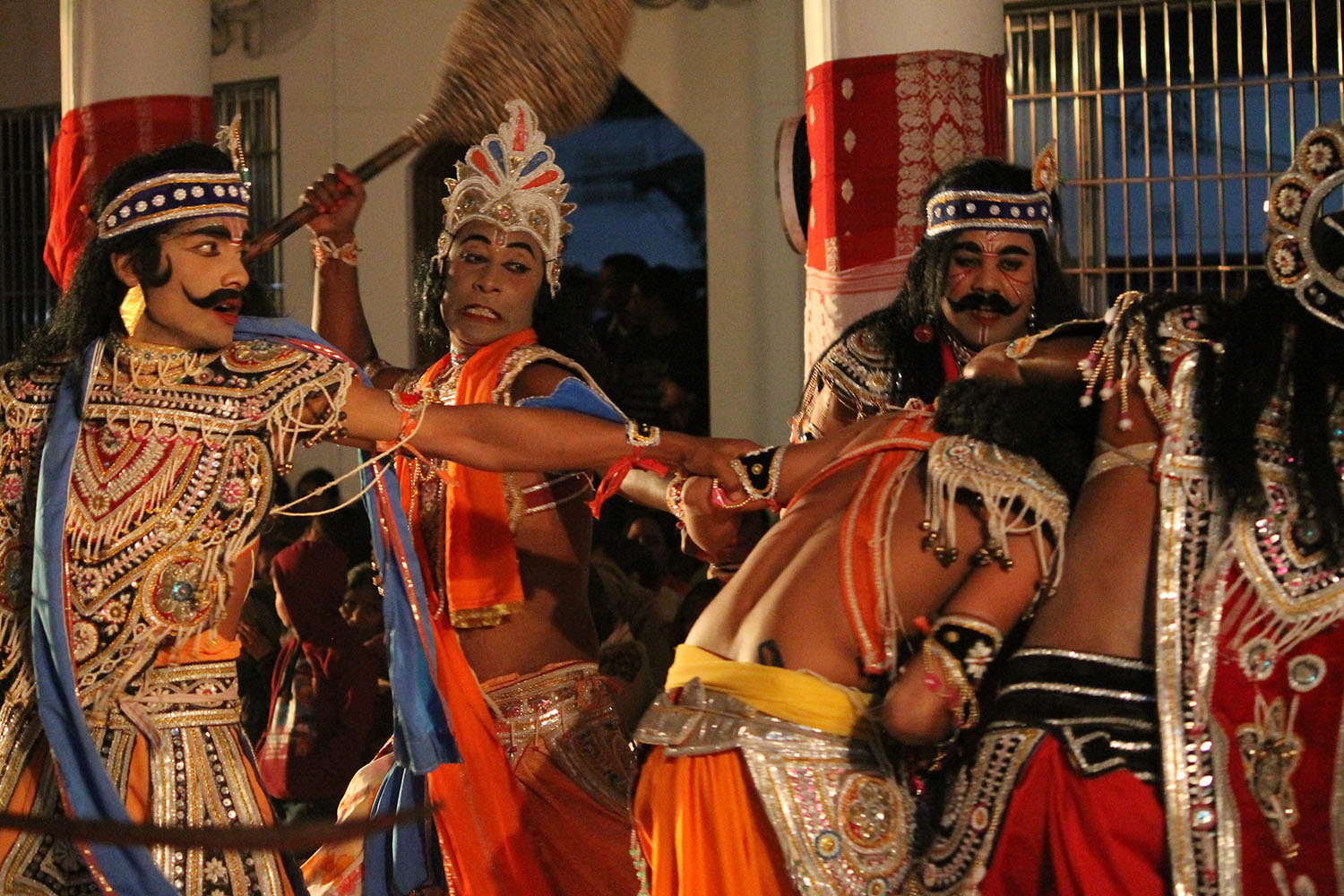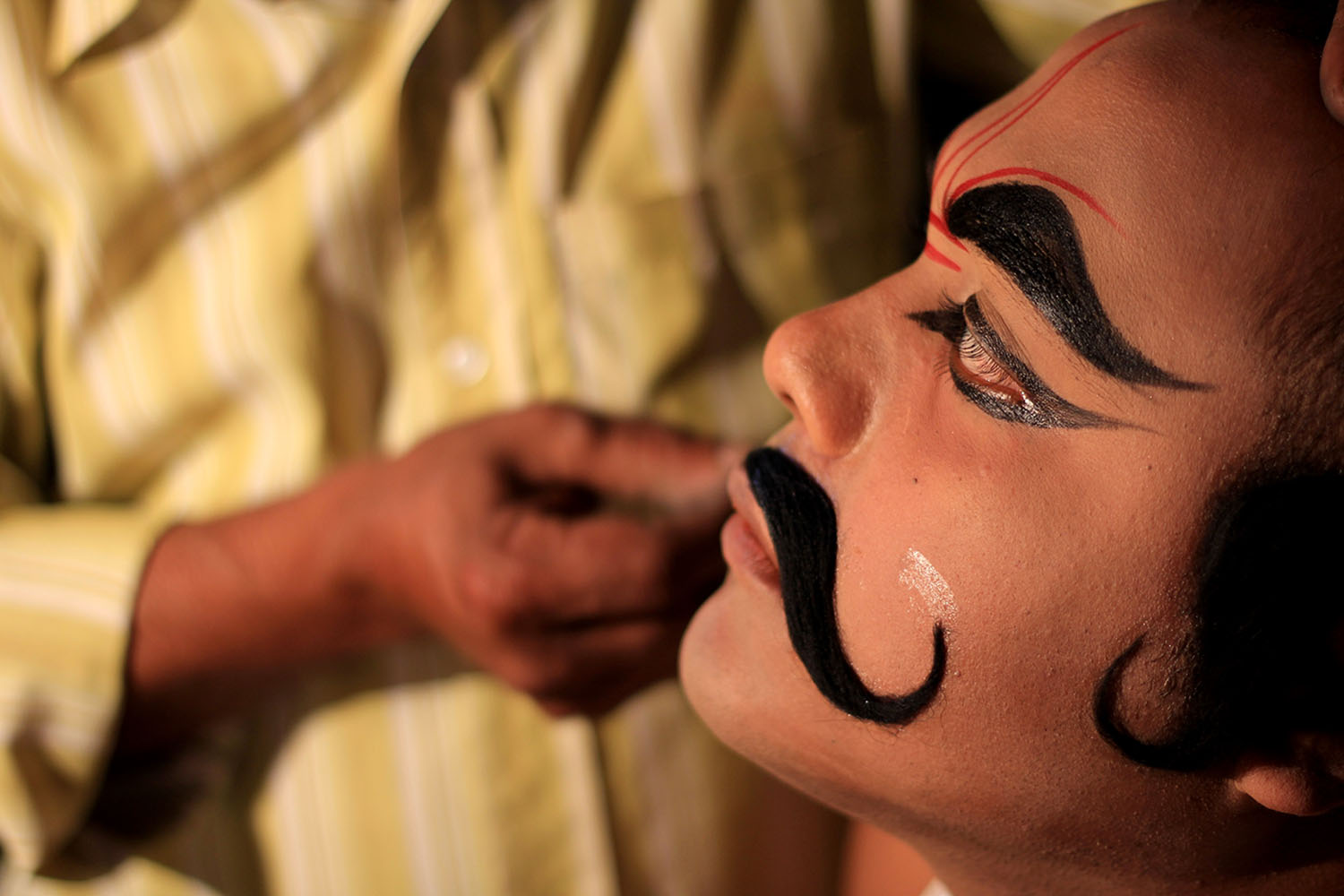ARTICLE
Bhaona
A genre of folk drama primarily staged in Assam, bhaona refers to the performance of one-act plays known as Ankiya Nat, and to plays derived from this performative genre.
Bhaona originated during the Assamese neo-Vaishnavite bhakti movement in the fifteenth and sixteenth centuries, spearheaded by the reformer and poet Sankardev. Sankardev’s school of bhakti preached the adoration of Krishna, which he is believed to have propagated through various performance forms, including the Sattriya dance and bargeet (devotional songs). Sankardev and his disciple Madhavdev also composed a number of one-act plays in Brajavali, generally depicting episodes from Krishna’s life from the Bhagavata Purana. These were referred to as Ankiya Nat, the term ankiya meaning an act or an episode, and nat meaning drama. Scholars suggest that the performative repertoire of Ankiya Nat plays, which came to be known as the bhaona performance style, was influenced by the Ojapali dance tradition. These performances traditionally took place in the pavilion of a namghar (prayer hall) within a satra (an institution established by Sankardev’s disciples), which also housed religious scriptures and the manikut (god’s seat).
All the characters in these plays are performed by men. The beating of drums signifies the beginning of a bhaona. Meanwhile, the performers get ready in a green room located away from the main pavilion. The spectators are typically seated around the pavilion. A purvaranga (preparatory performance) is first held as a prelude, involving the singing of devotional verses. Traditional bhaonas involved a sutradhar who would introduce the plot and characters, and recite a verse to initiate the performance. The orchestra and performers would then enter the stage. The dancers, wearing bhaona masks to indicate the emotions of the characters, would use mudras and rhythmic dancing in tune with the music and the sung verses. Performances were accompanied by brass cymbals and drums.
Important playwrights following Sankardev include Gopal Ata, Dvija Bhushan, Ramcharan Thakur, Daityari Thakur and Jadumani Dev. Writing in the seventeenth century, many of their plays began to use Old Assamese in place of the Brajavali and Brajabuli dialects that earlier playwrights used. Around this time, the term Ankiya Nat began to be used exclusively for the works of Sankardev and Madhavdev, while the bhaona performance style began to be used in new spaces outside of its traditional satra setting. Bhaonas also began to attract royal patronage: a performance of Ravana Badha bhaona is recorded as being held during the marriage of the Ahom king Rajesvara Simha in the eighteenth century.
Further thematic and performative deviation of bhaonas from the form initially conceptualised by Sankardev emerged in the late eighteenth and nineteenth centuries. During this time, songs in Old and colloquial Assamese largely replaced the dialogue and prose from earlier plays, leading to the form becoming known as Asamiya (Assamese) or Matribhashar (mother tongue) bhaona. The content changed, with newer narratives depicting stories from epics, and narratives of local heroes and legends. Bhaona also underwent regional transformations, borrowing from existing performative traditions. For example, Dhura bhaona incorporated elements from the Dhup Kirtan (devotional songs that involve specific rhythmic patterns) from Bengal. Phaujiya bhaona, which originated in the region corresponding to modern Cooch Behar in the sixteenth century, began to incorporate elements from the Bengali Jatra and used a mix of Bengali, Assamese, Hindi and Sanskrit verses. Juri bhaona emerged in the early nineteenth century, and differed from earlier forms through the absence of the sutradhar and some devotional verses. The Cukraganor bhaona also removes the sutradhar as a part of the performative repertoire.
By the late nineteenth century, bhaona began to be used in more secular contexts, with performances held for Queen Victoria’s Golden Jubilee in 1887. Characters such as the bahua (clown) and dut (messenger) were added to the plays, and verses became simpler. Musical instruments such as the mridangam also began to be used.
Today, bhaona performances are performed in satras in the Brahmaputra valley and parts of the Barak valley in Assam, as well as in Arunachal Pradesh, Cooch Behar district and West Bengal. The performing communities of bhaona include the Assamese Vaishnavite community, as well as some groups from the Bodo, Mising and Sonowal communities, the Rajbhanshi community of Chatrasal, Cooch Behar and Assam, and certain Naga communities in Assam and some members from the Nocte community in Arunachal Pradesh.
Bibliography
Our website is currently undergoing maintenance and re-design, due to which we have had to take down some of our bibliographies. While these will be re-published shortly, you can request references for specific articles by writing to hellomapacademy@map-india.org.









